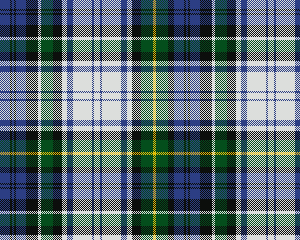from AncestralFindings.com
Vol. 25, No. 36 — September 10, 2020
(with editor’s notes at the end)
Scottish naming patterns of the past few centuries can provide excellent clues as to the names of parents, grandparents, and even great-grandparents of your Scottish ancestors. If you have a brick wall Scottish ancestor, their name or the names of their children can be an enlightening guide past the wall. Here is the most common Scottish naming pattern of ancient times, as well as common ancient Scottish nicknames and name spelling variations to look for in your genealogy work.
The traditional Scottish naming pattern goes like this:
The first son — named after the paternal grandfather
The second son — named after the maternal grandfather
The third son — named after the father
The fourth son — named after the father’s father’s father
The fifth son — named after the mother’s father’s father
The sixth son — named after the father’s mother’s father
The seventh to tenth sons — named after the father’s four great-grandfathers
The eleventh to fourteenth sons — named after the mother’s four great-grandfathers
The first daughter — named after the maternal grandmother
The second daughter — named after the paternal grandmother
The third daughter — named after the mother
The fourth daughter was — named after the father’s father’s mother.
The fifth daughter — named after the mother’s mother’s mother.
The sixth daughter — named after the father’s mother’s mother.
The seventh through tenth daughters — named after the mother’s four great-grandmothers
The eleventh through fourteenth daughters — named after the father’s four great-grandmothers
Occasionally, a child in a family died, and when this happened, some parents named the next born child of the same gender the same name that had been given to the deceased child. This was to ensure the family names were moved on to the next generation. Also, if the naming pattern indicated more than one child in a family should be given the same first name (because a lot of Scottish men and women of the olden days were named Alexander and Mary), the children after the first child who was given a certain name were given two first names at their christening, in order to distinguish them from one another.
Also, do not forget about nicknames when researching The use of nicknames was quite common in Scotland for many centuries, and the same types of nicknames tended to be used for the same given names. Sometimes, the nicknames were used on official records, rather than the given names. There are a lot of different nicknames used in old Scottish culture that are worth exploring in your genealogy, but a few of the most common ones were:
Kate or Katie for Catherine or Katherine
Jinty or Jenny for Janet
Gussie for Angus
Charlie for Charles or Charlotte
One more thing to look for when researching your ancient Scottish ancestor names is spelling variations. Some Scottish names had one or several spelling variations before spelling became standardized in the early to mid-1800s. These are some of the most common spelling variations in Scottish first names:
Alexander — Alec, Eck, Sandy, Sander, Xander
Ann/Anne/Anna — Anice, Annag, Annella, Annis, Annys
Andrew — Andro
Elizabeth — Elspeth
George — Dod
James — Hamish
Jane — Jean, Janet Jessie
John — Ian
Katherine — Catrina, Caitriona, Ceitidh
Mary — Mae, Morag
Editor’s note: How does this apply to your family? One example from my family, with a slight loving variation, is that my oldest brother is named “Paul” after our Scots-Irish-descended grandfather Paul Gray, our mother’s father, not our paternal grandfather. The Apostle Paul (c.5-65), as you know, was a follower of Jesus who established the early churches around the Eastern Mediterranean and penned the Epistles. To make up for the backwards variation of the Scottish naming practice in our family, my brother’s middle name is “Wesley,” after our English-descended grandfather Wesley Pearce, our father’s father. It’s interesting that the English more often than not named their children after famous countrymen. Of course, John Wesley (1703-1791) was a noted theologian and evangelist. Our early Pearces probably had encounters with him as he rode through Wiltshire on horseback on his way to speaking engagements. My ancestors were considered religious non-conformists, and many are still devout Methodists (article forthcoming). Ironically, Grandpap Pearce’s middle name was “Herron,” after the pioneer Presbyterian preacher from nearby Pittsburgh who visited their area.
In keeping with my Scots-Irish heritage, my Swiss-German-descended wife and I named our first-born daughter “Annie” after her maternal grandmother Annie Lee Krause (1885-1971), whose ancestors were probably Irish. She married a man of German origins. I later learned that “Annie” was also the name of several of my mother’s Scots-Irish-descended ancestors. So, as you can see, naming practices can get complicated. Send me your examples and naming questions below. I’ll share the responses and try to get answers to share with our readers. Thanks!
Last revised 9/25/20

